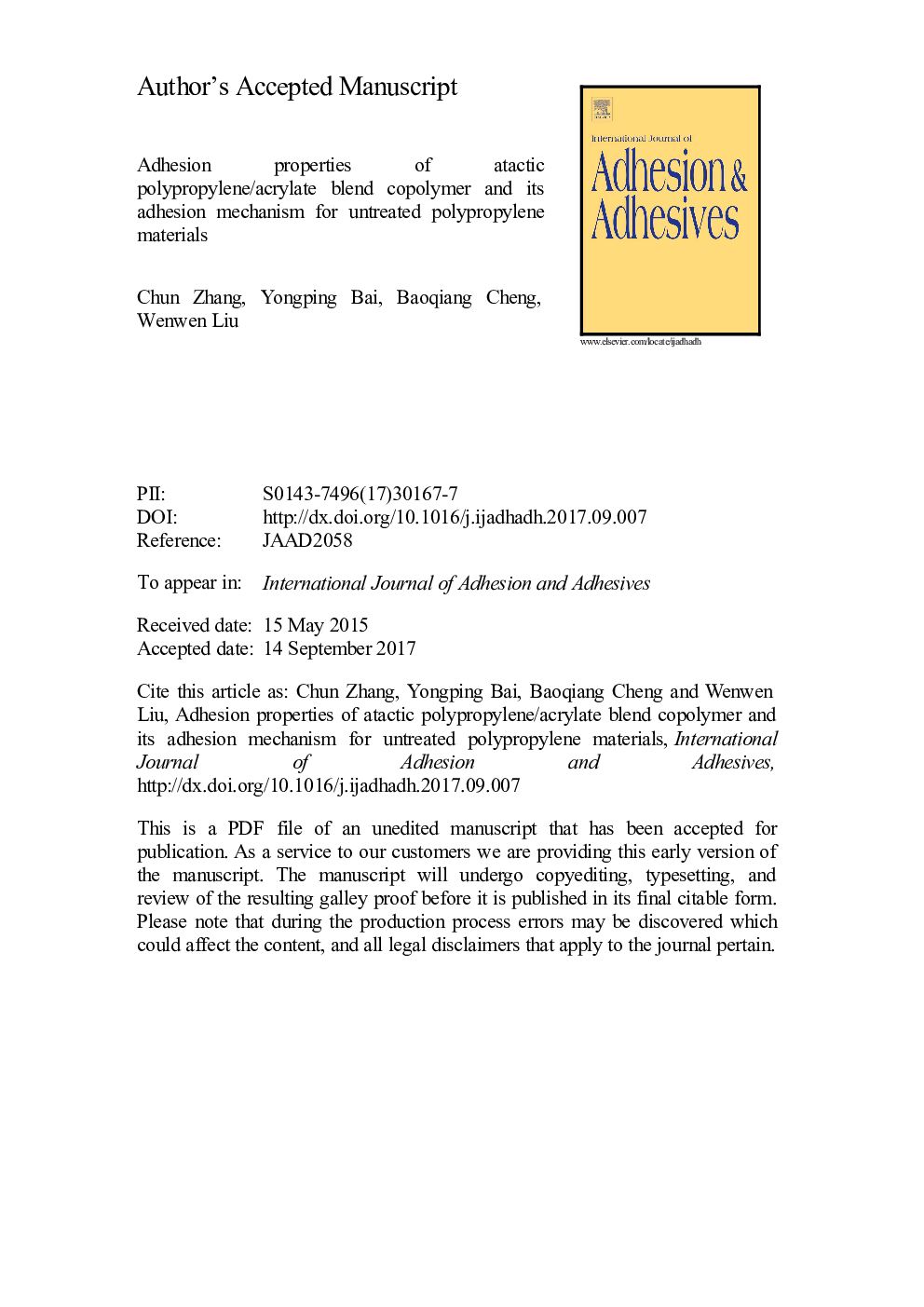| Article ID | Journal | Published Year | Pages | File Type |
|---|---|---|---|---|
| 7171013 | International Journal of Adhesion and Adhesives | 2018 | 14 Pages |
Abstract
The adhesion and coating of polypropylene (PP) materials usually requires pre-processing, or the use of modified chlorinated polypropylene (CPP) as an adhesive, which is often synthesized in a benzene solution. Here a feasible method was achieved to modify atactic polypropylene (APP) to obtain an adhesive for polypropylene. Through “grafting from”, acrylate monomers were successfully grafted onto atactic polypropylene to obtain a blend copolymer in a butyl acetate solution. The adhesive presented excellent adhesion to polypropylene. A maximum peel strength of 12.9Â N/m was achieved. A mechanism to account for this enhanced adhesion between the blend copolymer and PP was proposed. In addition to a van der Waals force contribution, it was concluded that the promotion of adhesion included the contributions from diffusion and entanglement together with crystallization.
Keywords
AFMDSCBOPPDCPMMACPPAPPGPCEVAPOMTHFAcrylamideethylene-vinyl acetatePeel strengthAcrylic acidIsobornyl acrylateButyl acrylateTetrahydrofuranDicumyl peroxideX-ray photoelectron spectroscopyXPSMethyl methacrylateSEMscanning electron microscopeatomic force microscopyPolarizing microscopyAtactic polypropylenePolypropyleneBiaxially oriented polypropyleneDifferential scanning calorimetryGel permeation chromatography
Related Topics
Physical Sciences and Engineering
Engineering
Mechanical Engineering
Authors
Chun Zhang, Yongping Bai, Baoqiang Cheng, Wenwen Liu,
